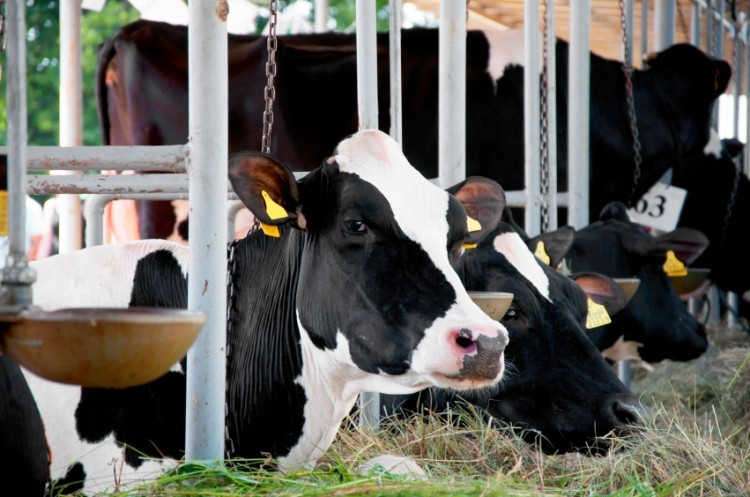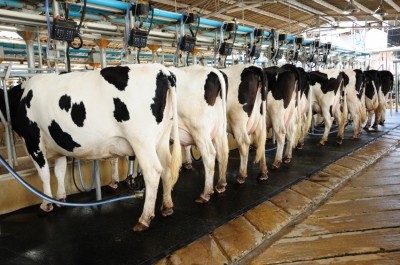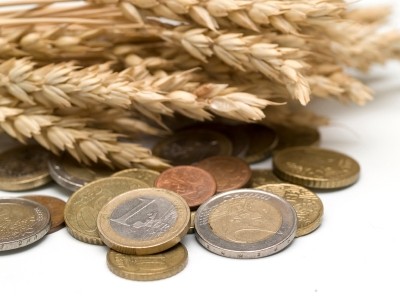Reports from One the Alltech Ideas Conference
How can dairy cows be more efficient in utilizing fatty acids?

North American finalist for the Alltech Young Scientist competition and the winner of the graduate student round, Jonas de Souza, examined the use of three fatty acids in different amounts in the diets of dairy cattle.
His research, done at Michigan State University, grew out of work done as an undergraduate, he said. One question he is trying to answer is how producers can be more efficient with dairy cow production by altering the fatty acid profile of the diet.
“We know some fatty acids are very important for dairy cows metabolism, and what we are focusing our research on is quantitatively the three most important ones: palmitic, steric and oleic,” he told us. “The idea here is to think about how can we change the proportion of these fatty acids in the diet in order for the cow to be more efficient in utilizing these fatty acids?”
The ongoing research work has since dropped steric as it was shown not to play as large a role as the other two fatty acids, he said. And, the work is generating data suggesting that different fatty acids are more important for improved production during different lactation stages.
“We had done experiments with palmitic and oleic,” said de Souza. “It seems that cows that are usually in positive energy balance, cows on that second and third stage [of lactation] – they respond better to higher levels of palmitic while cows that are fresh probably respond better to having more oleic in the diet.”
Research details and takeaways
In the project, the researchers started by explored the use of different amounts of three fatty acid, said de Souza. In addition to the added fatty acids, cows received a typical total mixed ration diet.
“We designed an experiment to see how those cows would respond when we added those fatty acids to the diet in [several] combinations,” he said. “Then we measured milk production, the energy output that the cows would have had in the milk, the energy intake of those cows, the body weight gain of those cows, the associations between fatty acids we are providing, how much these cows are putting, in terms of energy, in the milk, and how much gain.”
Now, they are considering fatty acid use in the diets for three different stages of milk production, he said.
“Today what we are doing is looking specifically to stages of lactation, because we think that the best fatty acid combination varies according to stage of lactation in cows,” he said. “Cows that are at the beginning of lactation they probably respond better to a certain type of fat supplement, but that type of supplement is probably not going to work [for] later in lactation.”
The stages being examined are from parturition through about day 30, day 30 to about day 70 or 80 and from mid-lactation to late-lactation, said de Souza. “We have been focused on this three phase and it seems that the same fatty acid profile has a distinct effect on the metabolism of the cows if its fed according to the time,” he added.
The influence of lactation stage was not expected, he said. “It can lead us to a new research area when we talk about grouping strategy in cows,” he added.
“We can improve the way that we feed cows,” he said. “We can provide better answers like the profile that you should feed here, or the profile that you should feed for this or that group of cows.”
The next step for the work is to establish data to support that more oleic acid is beneficial during the fresh stage, or first stage of lactation, he said.
“One answer that we have is those two fatty acids are key – palmitic and oleic – that’s our first answer,” he said. “I hope in a few months we’ll have a better answer on when you feed them, which strategy you should use to feed them.”
Alltech young scientist program
The Young Scientist competition asks students to be nominated by their universities and present a paper on their research at the regional level, said Alltech. From that group four regional winners from North American, Latin America, Europe and Asia Pacific are selected to become global finalists.
At the graduate level, students are competing for $2,000 at the regional level and $10,000 at the global level, said the company. The global winner also gets a fully funded post-doctoral position.
Taking part in the Alltech competition was a way to highlight the importance of research, said de Souza. “What I’m doing I think is important for the dairy industry,” he added.
As the graduate student winner, he now has the opportunity to do take a positon with Alltech based either in Dublin or Kentucky.










